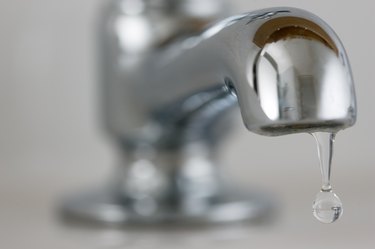Efficient Techniques for Dealing with Low Water Pressure in Your Home
Efficient Techniques for Dealing with Low Water Pressure in Your Home
Blog Article
Here below you might get a good deal of sound information in regards to 4 Ways to Troubleshoot Low Water Pressure.

Low water stress in your house can be a frustrating issue, affecting whatever from showering to washing meals. If you're experiencing weak water flow, there are several possible reasons and solutions to check out. In this overview, we'll review common factors for low tide pressure and practical actions to resolve the concern effectively.
Introduction to Low Water Stress
Low water stress occurs when the flow of water from your faucets, showers, and other fixtures is weaker than normal. This can make everyday jobs much more difficult and less effective. Recognizing the causes of low water stress is crucial to locating the ideal remedy.
Common Causes of Low Water Stress
Faulty Pressure Regulators
Pressure regulatory authorities are responsible for preserving regular water stress in your home. If they malfunction, it can lead to low tide stress or irregular circulation throughout your home.
Community Water Supply Issues
In some cases, the problem lies outside your home. Community water problems, such as main line leakages or maintenance job, can temporarily decrease water pressure in your area.
Pipeline Obstructions
Over time, pipes can come to be blocked with mineral deposits, sediment, or particles, restricting the circulation of water. This is an usual concern in older homes with galvanized steel pipelines.
Rust
Deterioration within pipelines can lead to leakages and minimized water stress. Rust build-up can constrict water flow, especially in maturing plumbing systems.
Just How to Detect Low Water Pressure
Checking Pipelines
Inspect visible pipelines for indicators of leaks, corrosion, or blockages. Take note of any uncommon audios, such as banging or rattling pipes, which can indicate concerns within the plumbing system.
Consulting with a Plumber
If you're unable to pinpoint the source of low water pressure, take into consideration hiring a professional plumber to perform a thorough evaluation. They can identify underlying problems and advise ideal solutions.
Checking Faucets and Fixtures
Start by evaluating the water pressure at various taps and components throughout your home. If the concern is isolated to particular locations, it may indicate local problems.
DIY Solutions to Take Care Of Low Water Pressure
Flushing Hot Water Heater
Sediment buildup in the hot water heater can limit flow and lower performance. Flushing the tank periodically assists get rid of debris and maintain optimum performance.
Checking Pressure Regulator
Ensure that the pressure regulator is working appropriately. Changing or replacing the regulator can assist restore appropriate water pressure throughout your home.
Cleansing Aerators and Showerheads
Mineral deposits can collect in aerators and showerheads, decreasing water flow. Get rid of and clean these parts regularly to improve water stress.
Clearing Up Clogs in Piping
For minor clogs, attempt making use of a plumbing serpent or chemical drainpipe cleaner to clear obstructions in pipes. Be cautious when utilizing chemicals and adhere to security guidelines.
When to Call an Expert Plumber
If DIY initiatives stop working to settle the problem or if you believe significant plumbing issues, it's finest to look for assistance from a certified plumber. They have the experience and devices to attend to intricate issues safely and efficiently.
Safety Nets to Preserve Water Pressure
Mounting a Pressure Booster
Think about setting up a pressure booster pump to improve water pressure in locations with continually reduced circulation. This can be especially helpful for multi-story homes or buildings with high-demand fixtures.
Tracking Water Use
Be mindful of water usage routines and avoid ill-using the plumbing system. Easy modifications, such as incredible showers and laundry lots, can aid preserve adequate water stress.
Routine Maintenance
Arrange routine upkeep for your plumbing system to stop concerns such as rust, leakages, and blockages. Addressing minor issues early can help avoid more significant repair services later on.
Conclusion
Dealing with low water stress can be irritating, but determining the underlying reasons and implementing proper services can restore optimum circulation throughout your home. Whether it's cleaning aerators, evaluating pipes, or speaking with a plumber, taking proactive steps can make certain a stable supply of water for your daily demands.
HOW TO FIX LOW WATER PRESSURE IN YOUR HOUSE (EXPERT GUIDE)
The morning shower lacking any real pressure? Bathtub taking hours to fill? Or maybe you’re dissatisfied with the inadequate performance from your combi boiler?
Then you, like millions of others across the UK, might be experiencing low water pressure.
Fortunately, the good news is that you don’t have to continue living this way. The cause of low water pressure in the home is often quite simple, and you may not even require a plumber to fix the problem.
What causes low water pressure in the house?
If you are experiencing issues with water pressure throughout your home, then you may have one of the problems outlined below.
Most of these problems can be fixed quite easily, but for others, you may need to contact a plumber.
Obstructed Shutoff Valve
If you’ve just bought a new home or recently had building work conducted on your property, there is a chance that your water valves were not fully opened.
If the water valve is partially closed, then you may be restricting the amount of water entering your home. To fix this, simply ensure the valve is fully open.
If the valve appears fully open but you are still encountering reduced water pressure, then the valve may be broken. If this is the case, do not under any circumstances try to fix it without proper training.
Often found under your kitchen sink, a water valve will usually look like a bright yellow handle.
Again, if you believe the water valve is broken, contact a plumber immediately.
Leaks in Your Water Pipes
Leaks are the worst-case scenario when it comes to low water pressure.
If the water pipes are damaged, then this will cause low water pressure, as not all the water will make it to your taps.
After you’ve checked to see if the valve is fully open, you can conduct a leak check of your home. Now, this may seem scary, but it is actually quite simple.
Clogged Water Pipes
Clogged water pipes are one of the most common causes of low water pressure.
These clogs usually build-up when your home is supplied water via iron pipes. Iron is particularly vulnerable to rusting which can then break off and cause an obstruction within your system. You also face the problem of things like dirt, gravel or sand entering creating mineral deposits which further block water flowing from the mains water supply.
Unfortunately, if you suspect that clogged pipes may be restricting your water supply, then you will need to contact a plumber.
In this situation, you will either need to have your pipes removed and cleaned or in more severe cases, you could require a new set of water pipes.
Designer Taps
Designer taps look fantastic, but are they built to be efficient in your plumbing system? Modern taps are built for modern homes and they often have lower flow rates that are specifically designed for use within high-pressure systems.
Install a Water Pressure Booster Pump
If the issue is simply that the mains water pressure supply is too low, the simplest fix is to invest in a booster pump. Found in homes of all shapes and sizes, booster pumps are a relatively cheap option to add extra pressure to your home.
Designed to increase water pressure by passing water into the pump from your mains supply and then ejecting it into your home water system at a higher pressure, a booster pump is a truly simple and effective solution to increasing water pressure.
https://www.anchorpumps.com/blog/the-plumbers-guide-to-fixing-low-water-pressure/

Do you appreciate reading about ? Try leaving a review further down. We will be delighted to hear your feelings about this review. We hope to see you back again before long. Please take the time to distribute this blog posting if you liked it. Many thanks for taking the time to read it.
Request Free Estimate Report this page